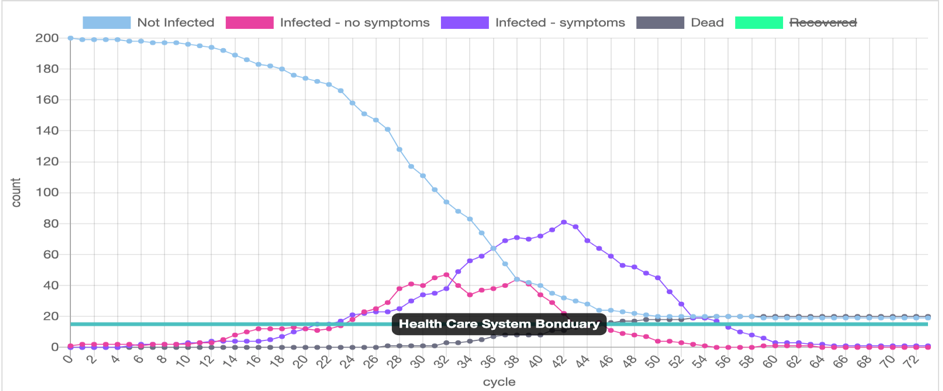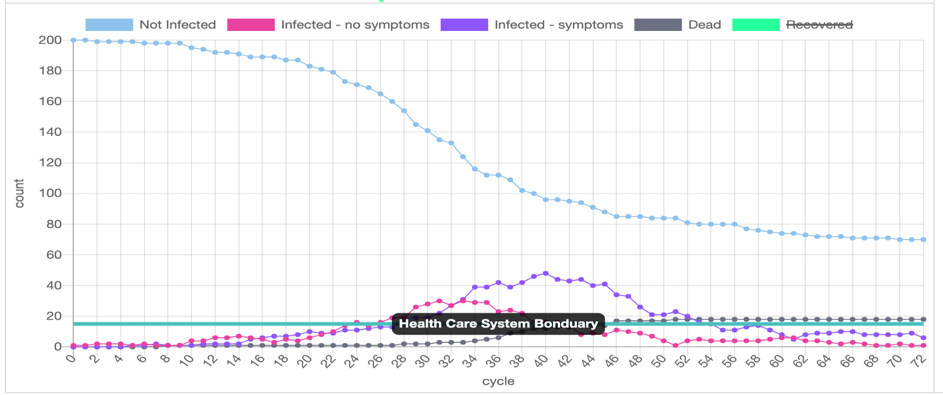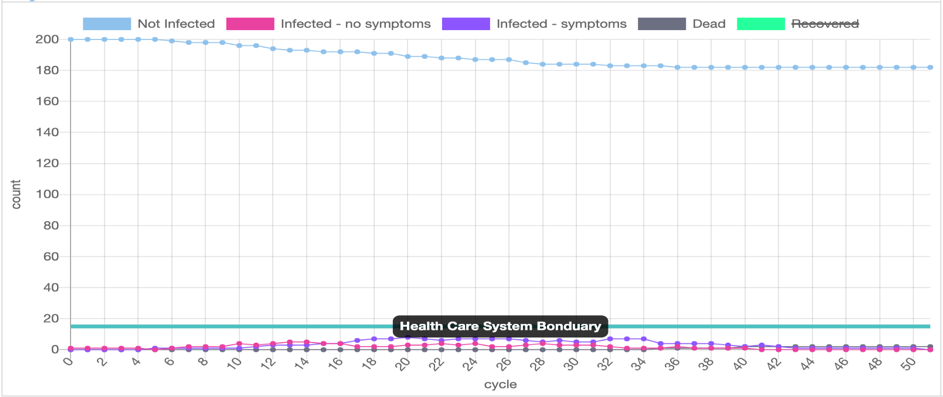In the times of COVID-19 pandemia you have probably heard about the importance of social distancing and its importance in preventing the further spread of the problem. You have also probably heard about the importance of flattening the curve of infection, as well as discussions around the upper bound limits of medical systems that might quite easily be crossed if quarantine is not strictly preserved.
Much of what you have read so far is true. It would also be good to know more precisely (at least to an order of magnitude) how social behavior impacts wide spreading of corona virus based on more detailed circumstances.
There is no simple or direct way to get numbers around some potential actions to be taken before we implement them in the real world, but it is still possible to evaluate to some extent the effectiveness of actions to be taken and decide whether they are worth being considered.
One approach is to consider microsimulations, i.e. computerized analytical tools that perform a high level analysis of actions and consequences. The digitalization.team has recently prepared a browser-based software called
Viral Propagation Simulator
“Viral Propagation Simulator” that enables to simulate the spread of a disease. The use of the simulator is very intuitive and simulation set-ups can be easily changed with sliders and start/stop buttons.
There are 3 groups of variables that can be considered in the simulation setup: population, pathogen and health care. The animated panel in the upper left window shows individuals contacting other member of society and the pace of spreading the virus if a distance between individuals is small enough to infect other people. The bottom panel shows statistics/dynamics of changes in (non-)infected, dead and recovered individuals in the days which follow “day zero”, given the chosen setup.
Let’s take an example of two kinds of two completely different European societies in Mediterranean and Scandinavian countries. Traditionally, southern European societies tend to go outside and meet friends almost on a daily basis while in northern Europe people prefer spending their evenings at home, not socializing as frequently as southern countries and performing mostly individual sport activities.
Let’s start with a simulation for a group of 200 people where only 1% of population is infected, and the percentage of people not moving is equal to 10%. All other settings are set to default values. In such a setup (i.e. the“mediterranean case”) the Health Care System limit is usually crossed after 3-4 weeks of having the 1st diagnosed case (Fig. 1). By changing just the percentage of static individuals to 50%, qualitatively closer to a northern European situation, the Health Care System is robust up to 9-10 weeks, significantly reducing the number of infected people and thus the number of deaths (Fig. 2).
 Fig. 1. “Italian case” – only 10% of static individuals. Clearly visible drop of non-infected people in the first week of simulations
Fig. 1. “Italian case” – only 10% of static individuals. Clearly visible drop of non-infected people in the first week of simulations
 Fig. 2. “Scandinavian case” – 50% of static individuals. Health Care systemlimit crossed only temporary.
Fig. 2. “Scandinavian case” – 50% of static individuals. Health Care systemlimit crossed only temporary.
What happens if we change the percentage of people not travelling and isolated to 85%? (this is an optimistic assumption if quarantine is strictly preserved). Even in the worst scenario only 4-5% percent of the whole population might have been infected, an even lower result compared to the assumed Health Care System limits (Fig. 3). In the previously mentioned “Italian case”, instead of 4-5% the number could increase up to60-70%, and the number of deaths may reach even 9-10% of the whole society because of the health care system collapse.
 Fig. 3. “Quarantine case” - 85% of static and isolated individuals. Health care system remains stable.
Fig. 3. “Quarantine case” - 85% of static and isolated individuals. Health care system remains stable.
The above described use case is one of hundreds of possible simulation setup. For example, variables like the incubation time, number of days with/without symptoms, transmission probability and so on, may be quite easily adjusted to simulate other diseases and how our actions may change the outcome.
Despite what are obvious limitations behind a microsimulation approach, itshows itself to be a very useful tool for quickly figuring out the rough impact of single decisions on the whole of society. We strongly encourage you to play a bit with the simulator online at:
Viral Propagation Simulator - online
Instructions how to embed simulator on your website can be found here:


